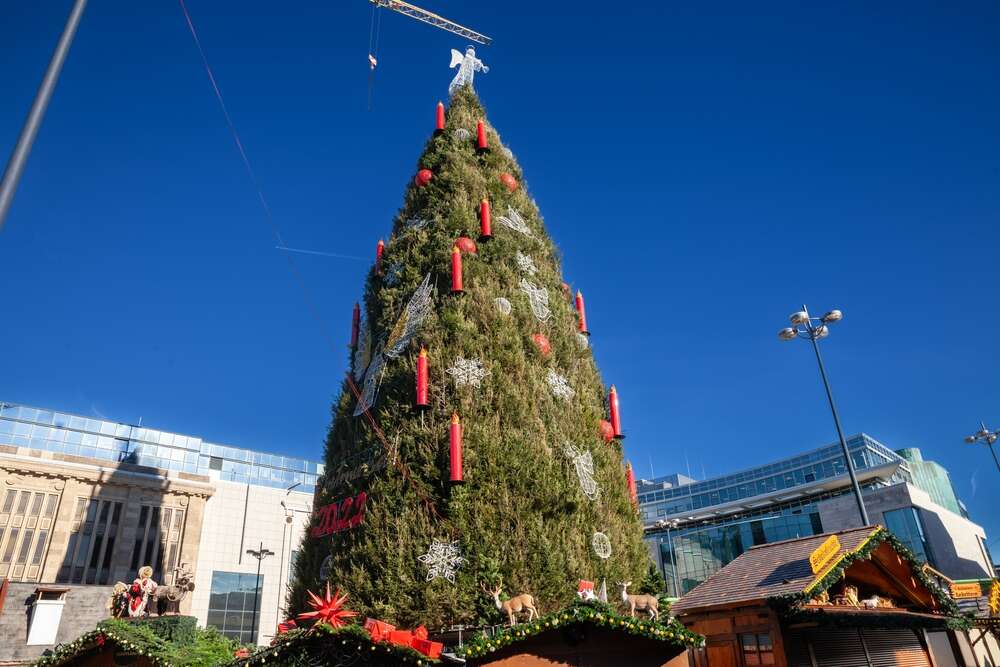
According to the Guinness Book of World Records, “The world’s tallest cut Christmas tree was a 67.36m (221ft) Douglas fir (Pseudotsga menziesii) erected and decorated at Northgate Shopping Center, Seattle, Washington, USA, in December 1950.” In 2021, Enid, Oklahoma, was home to the US’s tallest Christmas tree at 140ft. Which led the local press to herald it as the world’s tallest Christmas tree.

However, the data for these claims is a little inconsistent – some are the record height for that city, while others are a height consistently hit every year – but all have in common the fact they’re made of Christmas tree materials.
If those last three words confused you, let us elaborate. Some cities’ Christmas trees are traditional trees, grown out of the ground, all in one go. But some are built by Christmas tree builders (yes, this is a job) by riveting together lots of bits of other Christmas trees. This, according to the people who decide these things, still qualifies as a tree.
The world’s largest Christmas tree is in…
Arguably the tallest tree of all is in Dortmund, Germany, which is a prime example of this more creative approach to tall trees. At around 46m or 150ft tall every year, it is enormous, the King Kong of Christmas trees.
The tree weighs around 40,000kg, takes four weeks to construct and is coated in 48,000 electric lights. It forms the centrepiece of Dortmund’s Christmas market, which draws thousands of tourists and kind of explains why the relatively small German city invests in a 40-tonne Christmas tree every year.
At the other end of the scale is the White House’s National Christmas Tree, transported down every year from Alaska and usually standing between 30 and 40ft high. This is an honest-to-God tree, unaugmented by bits of other trees. It is, however, surrounded by smaller versions, which in turn represent the 50 states, the District of Columbia and the five territories.
London’s tree, standing at 65.6ft in Trafalgar Square, has been gifted every year since 1947 by the people of Oslo as a gesture of thanks for Britain’s support during the Second World War. Some models, however, have been criticised for being a “bit wonky“, and had to be straightened after erected.
Perhaps as a result of these attacks, the tree has established a pushy and emotionally needy Twitter presence that inserts itself into any conversation about the tree, Trafalgar Square, or anything remotely related to itself.
[Read more: Which European cities have the largest Christmas markets?]






